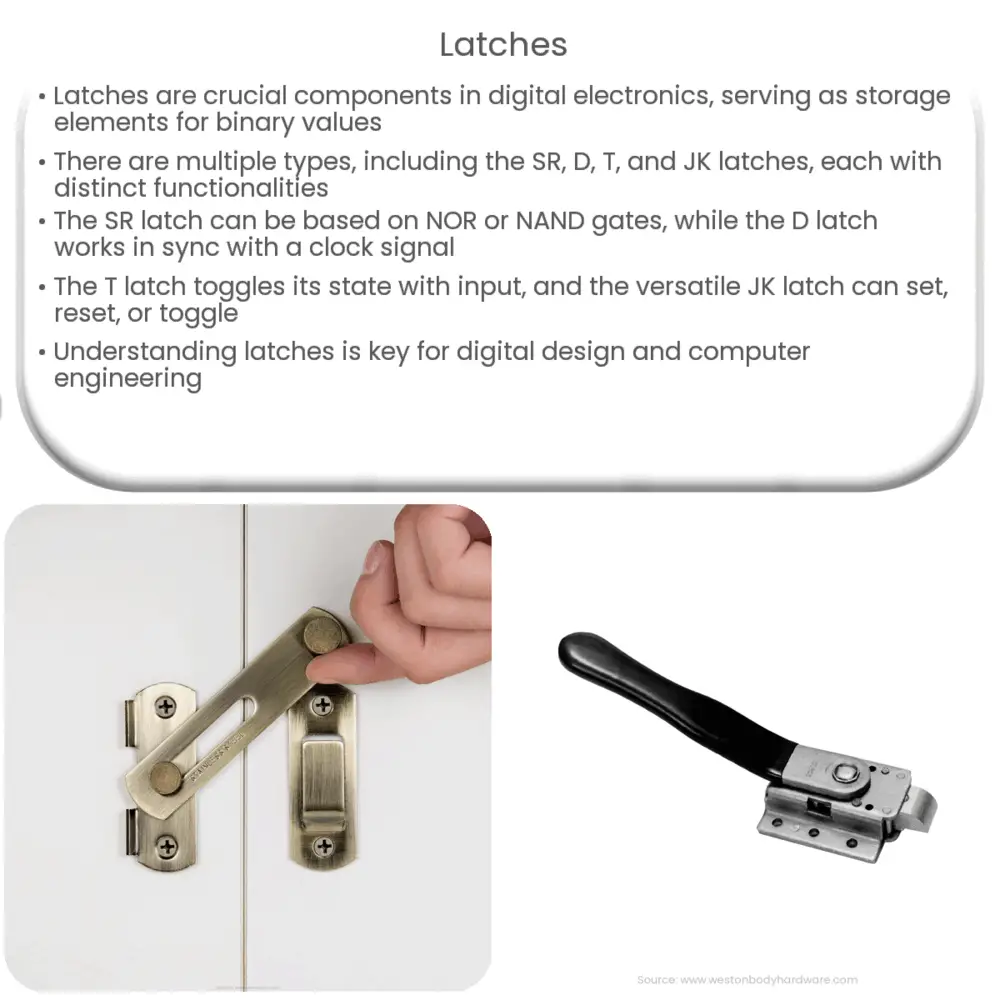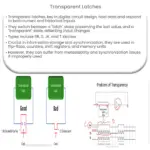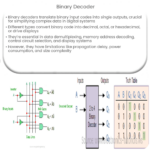Explore the world of digital electronics with our detailed guide on latches, covering types like SR, D, T, and JK latches.

An Introduction to Latches
Latches are fundamental building blocks in digital electronics, being essential components in the design of various circuits and systems. They serve as storage elements, capable of retaining a binary value (0 or 1), which is a fundamental function in digital systems.
There are several types of latches, each with their unique functionality and applications. The most common types include the SR latch, D latch, T latch, and JK latch. Each of these latches employs different logic gates, resulting in different functionalities and use-cases in digital systems.
SR Latch
The SR latch, also known as the Set-Reset latch, is the most basic type of latch. It consists of two cross-coupled NOR gates or NAND gates. The binary state of the latch is controlled by two inputs, Set (S) and Reset (R).
- NOR-based SR Latch: When both inputs are 0, the latch retains its last state (it’s ‘latching’). When S=1 and R=0, the latch is set to 1. When S=0 and R=1, the latch is reset to 0.
- NAND-based SR Latch: This variant works similarly but in reverse. When both inputs are 1, it retains its last state. When S=0 and R=1, it sets to 1. When S=1 and R=0, it resets to 0.
D Latch
The D latch, or Data latch, is a modified version of the SR latch. It is designed to overcome the undefined state in the SR latch (when S=R=1 in the NOR version or S=R=0 in the NAND version). The D latch has a single data input (D) and a clock input (CLK).
- When CLK=0, the latch is ‘closed’, and it retains its last state.
- When CLK=1, the latch is ‘open’, and the D input is transferred to the output.
This structure allows for control over when data can be modified, making it useful in synchronous circuits where operations need to be coordinated with a central clock signal. In the next part of this article, we will discuss other types of latches, namely the T latch and JK latch, and their specific applications in digital electronics.
T Latch
The T latch, also known as the Toggle latch, is a type of latch that changes its state or ‘toggles’ whenever it receives a pulse from its input. It is essentially a JK latch with the J and K inputs tied together. Here is how it functions:
- When T=0, the latch retains its last state.
- When T=1, the latch switches state, i.e., it toggles. If the latch was in the set state, it moves to the reset state, and vice versa.
The simplicity of the T latch makes it perfect for circuits that require toggling, like counters and dividers.
JK Latch
The JK latch is a refinement of the SR latch, which eliminates the forbidden state in the SR latch. It is the most versatile latch due to its ability to perform all the basic operations: Set, Reset, No Change, and Toggle. Its behavior is described as follows:
- When J=0 and K=0, the latch retains its last state.
- When J=1 and K=0, the latch sets to 1.
- When J=0 and K=1, the latch resets to 0.
- When J=1 and K=1, the latch toggles state.
The JK latch’s versatility makes it a popular choice for many complex digital systems, such as flip-flops and shift registers.
Conclusion
In conclusion, latches are fundamental elements in digital electronics, providing essential storage functionality. They come in various forms, each with their unique characteristics and applications. From the simple yet powerful SR latch, through to the refined and versatile JK latch, these devices are integral to the functioning of a multitude of digital systems.
The understanding of latches and their properties is vital for anyone involved in digital design or computer engineering. While they might appear complex at first glance, the principles behind their operation are elegantly simple, demonstrating the beauty and efficiency of digital logic.




